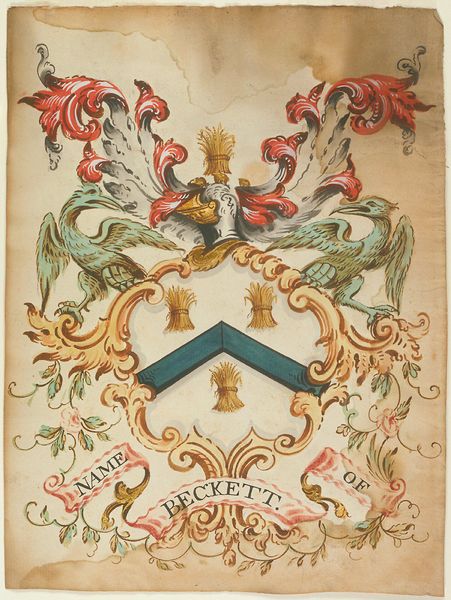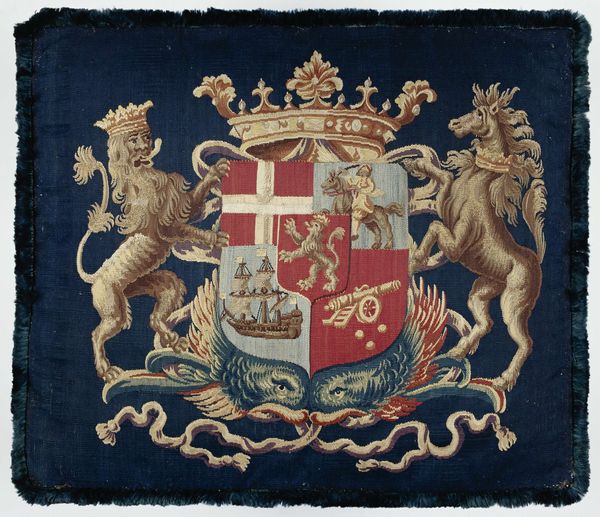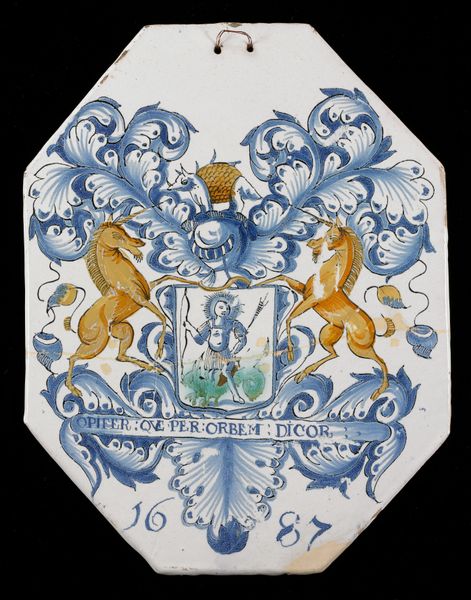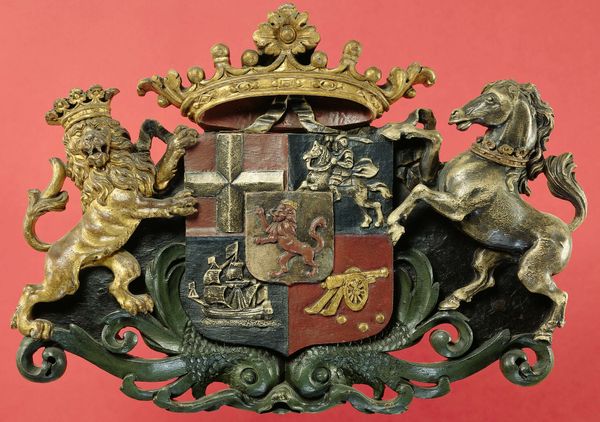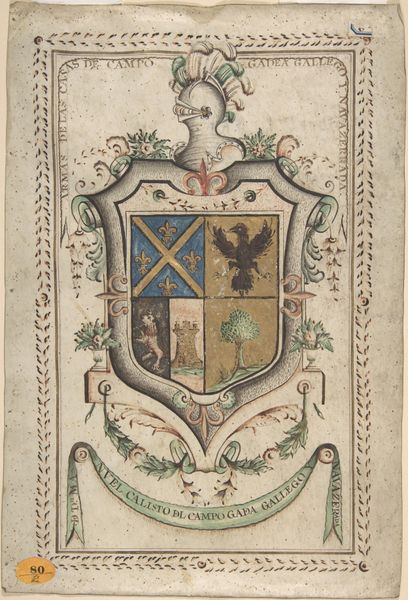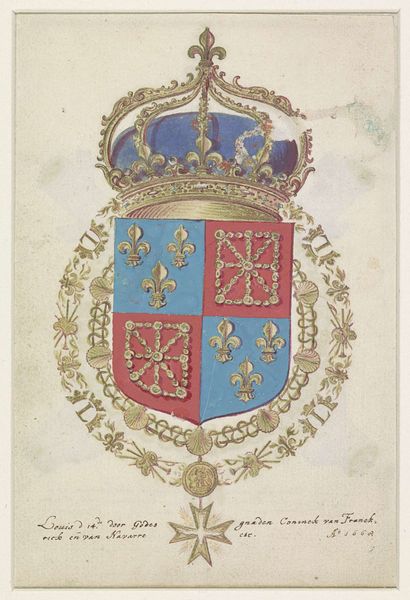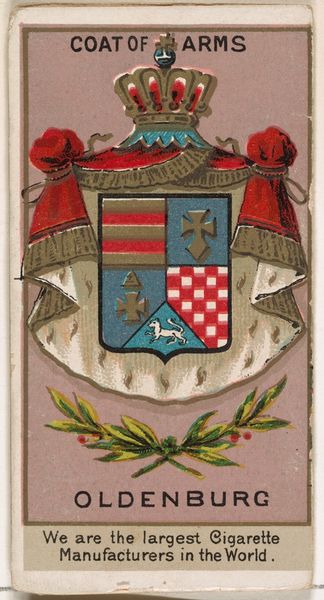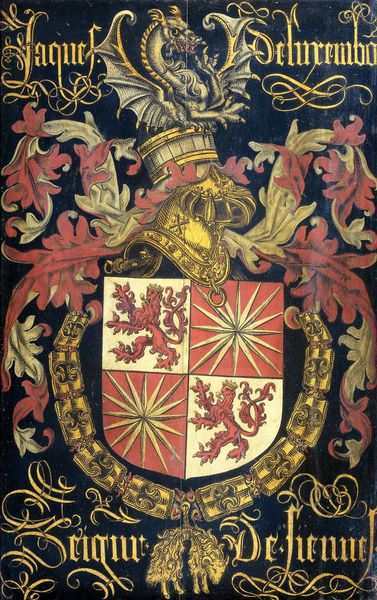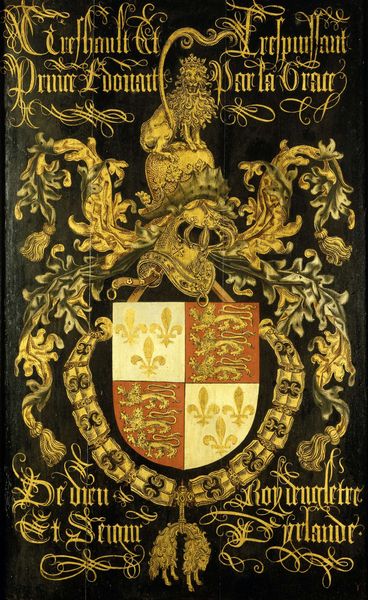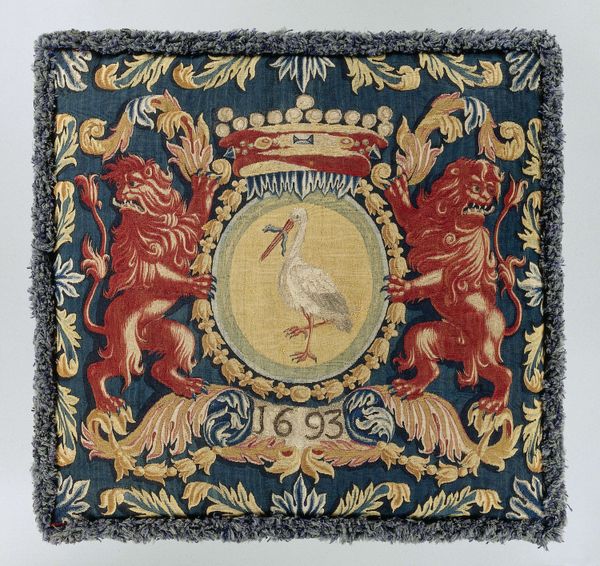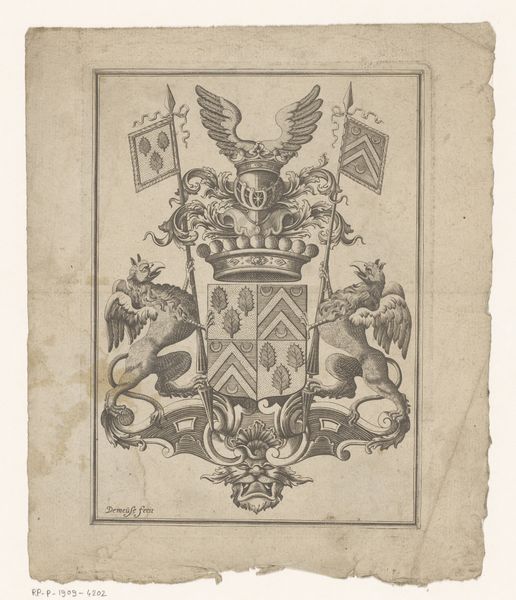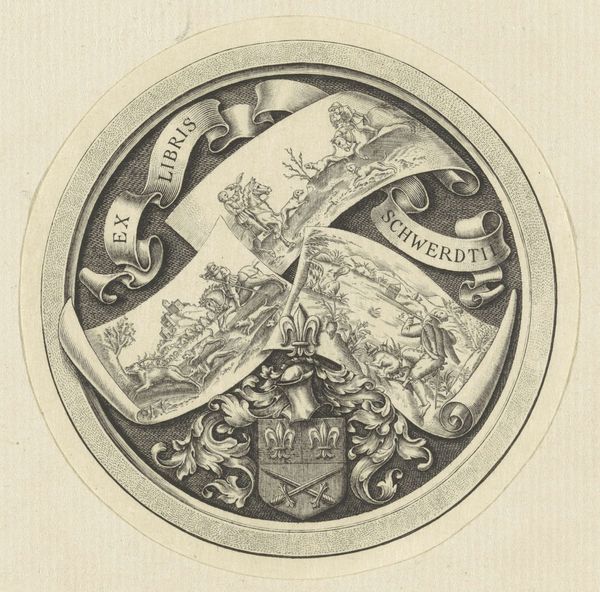
weaving, textile, embossing
#
decorative element
#
allegory
#
baroque
#
weaving
#
textile
#
embossing
#
history-painting
#
decorative-art
#
decorative art
Dimensions: height 67.5 cm, width 71.0 cm
Copyright: Rijks Museum: Open Domain
Curator: Here we have a striking cushion cover from 1711, bearing the coat of arms of Emiliapolder and likely crafted by Christiaen van Eurck. The medium is textile, and the work employs weaving and some embossing techniques. Editor: My immediate impression is of heraldic formality softened by the texture of the textile. The symmetrical arrangement of the lions and the shield creates a very balanced, almost stoic effect. Curator: Indeed, and that balance speaks volumes about the social order it represents. Consider the labor involved: weaving of this quality required highly skilled artisans, highlighting the importance of craftsmanship and the guild system within that era’s economy. Editor: The composition uses contrasting colors and textures to delineate the different elements—the dark background setting off the detailed figures. The symmetry itself underscores the concepts of order and hierarchy which were obviously very important to the commissioner. Curator: Exactly! And let's consider Emiliapolder itself— a reclaimed area, wrested from nature, named for Amalia van Solms. The cover celebrates not only land reclamation, but also control over resources and its inhabitants, visualized through these symbolic means. It hints at the transformation of both landscape and labor, reflecting broader socio-political ambitions of the Dutch Republic. Editor: It’s the materiality too; the plushness and softness that offer an intimate contrast with its overt regal presence. And also, how those qualities play against the rather stiff, heraldic symbolism. It has this striking blend of the public and private, strength, yet, unexpectedly cozy feel! Curator: That's a perceptive point, and also points toward consumption. Luxury textiles like this cushion cover weren’t mere decorations; they were performative expressions of social status, communicating power and influence within the Dutch society, by being physically incorporated into the living spaces. Editor: Reflecting on the artwork now, its lasting power lies in how it embodies the very paradox of authority, balancing austere display with human connection. Curator: I agree! Exploring the hands-on labor and its placement in sociopolitical conditions gives us insight of Dutch society!
Comments
No comments
Be the first to comment and join the conversation on the ultimate creative platform.
